 Search by Keyword
Sign Up Below for our MONTHLY BEATLES TRIVIA QUIZ!
|
"BEATLES VI"
(ST 2358)
Released June 14th, 1965
Capitol Records 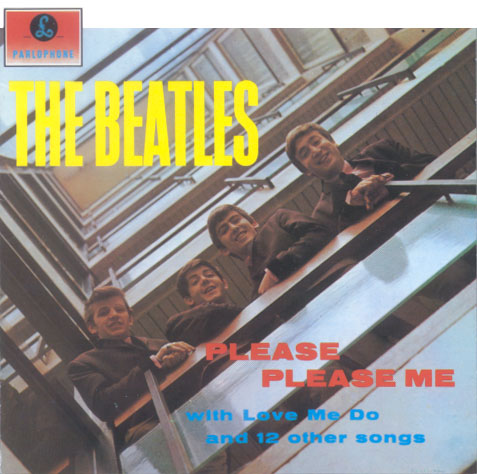 pulled off the ultimate feat in 1964. Since they had passed up the opportunity to release any Beatles music in America during 1963, there was enough music available to them to fill a total of four albums the following year, all of which sold in the millions. In fact, it is estimated that Capitol sold over 15 million Beatles records throughout the year, even though hardly touching on their first British album "Please Please Me." pulled off the ultimate feat in 1964. Since they had passed up the opportunity to release any Beatles music in America during 1963, there was enough music available to them to fill a total of four albums the following year, all of which sold in the millions. In fact, it is estimated that Capitol sold over 15 million Beatles records throughout the year, even though hardly touching on their first British album "Please Please Me."
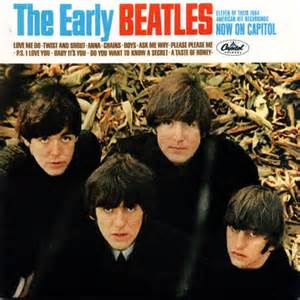 As 1965 began, the question was whether Capitol could release four albums during this year also. Since The Beatles were only planning on recording two albums during the year (as they had the previous year), it might be a difficult task to squeeze those songs into four American albums. One thing in Capitol's favor was their acquiring of the rights to the first album on October 15th, 1964, winning the lawsuits against Vee-Jay Records who originally released this material in the US. This being the case, Capitol released "The Early Beatles" on March 22nd, 1965, exactly two years after these songs were released in Britain. That makes one Beatles album for 1965. As 1965 began, the question was whether Capitol could release four albums during this year also. Since The Beatles were only planning on recording two albums during the year (as they had the previous year), it might be a difficult task to squeeze those songs into four American albums. One thing in Capitol's favor was their acquiring of the rights to the first album on October 15th, 1964, winning the lawsuits against Vee-Jay Records who originally released this material in the US. This being the case, Capitol released "The Early Beatles" on March 22nd, 1965, exactly two years after these songs were released in Britain. That makes one Beatles album for 1965.
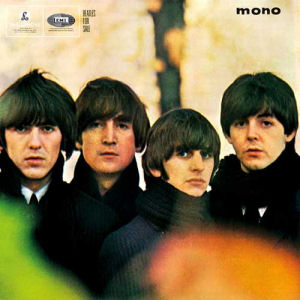 Since the soundtrack album to their second feature film "Help!" wasn't due to be released until August of 1965, there would be a long gap between album releases in the states. Capitol was already holding six songs from the British "Beatles For Sale" LP in reserve for the next album. Of course, six songs is not enough for a new album, but where would they get at least five more to fill out this proposed second album of 1965? Since the soundtrack album to their second feature film "Help!" wasn't due to be released until August of 1965, there would be a long gap between album releases in the states. Capitol was already holding six songs from the British "Beatles For Sale" LP in reserve for the next album. Of course, six songs is not enough for a new album, but where would they get at least five more to fill out this proposed second album of 1965?
Make-Up Of The Album
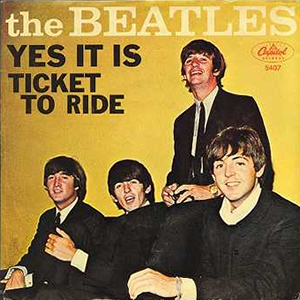 In actuality, Capitol was already in possession of five other Beatle titles that they hadn't issued on any album up to that point. First of all, they had just released their latest single "Ticket To Ride" which had debuted on the American singles charts as of the first week of May, 1965. While this song was earmarked for their upcoming soundtrack album, its b-side, "Yes It Is," was not, and therefore could be included in this make-shift album. In actuality, Capitol was already in possession of five other Beatle titles that they hadn't issued on any album up to that point. First of all, they had just released their latest single "Ticket To Ride" which had debuted on the American singles charts as of the first week of May, 1965. While this song was earmarked for their upcoming soundtrack album, its b-side, "Yes It Is," was not, and therefore could be included in this make-shift album.
 The other four spots on this album could also easily have been filled. There were three songs from their 1963 recordings that Capitol had yet to include on an album, these being "From Me To You," "Misery" and "There's A Place." Capitol omitted these songs from their recently released "The Early Beatles" album, so they may have been considered for this one. Also, in January of 1964 EMI duly dispatched both German-language recordings The Beatles had made to America, Capitol only releasing "Komm, Gib Mir Deine Hand" on the "Something New" album. Therefore, Capitol still had "Sie Liebt Dich" ("She Loves You") in their vaults and could easily have included this on the new album as well. The other four spots on this album could also easily have been filled. There were three songs from their 1963 recordings that Capitol had yet to include on an album, these being "From Me To You," "Misery" and "There's A Place." Capitol omitted these songs from their recently released "The Early Beatles" album, so they may have been considered for this one. Also, in January of 1964 EMI duly dispatched both German-language recordings The Beatles had made to America, Capitol only releasing "Komm, Gib Mir Deine Hand" on the "Something New" album. Therefore, Capitol still had "Sie Liebt Dich" ("She Loves You") in their vaults and could easily have included this on the new album as well.
 Luckily for all of America, Capitol decided against issuing the album with these last four titles. Instead of regurgitating songs from two years ago, most of which American audiences had heard before, they instead wanted to premier a new Beatles album in the states. This meant that they had to contact EMI in Britain to see what new Beatles tracks were available for release in the US. Since George Martin had been happy to comply with their request the year before, resulting in him sending "Long Tall Sally" and "I Call Your Name" for inclusion on the US album "The Beatles' Second Album" months before they were heard in Britain, Capitol didn't hesitate to ask again. Luckily for all of America, Capitol decided against issuing the album with these last four titles. Instead of regurgitating songs from two years ago, most of which American audiences had heard before, they instead wanted to premier a new Beatles album in the states. This meant that they had to contact EMI in Britain to see what new Beatles tracks were available for release in the US. Since George Martin had been happy to comply with their request the year before, resulting in him sending "Long Tall Sally" and "I Call Your Name" for inclusion on the US album "The Beatles' Second Album" months before they were heard in Britain, Capitol didn't hesitate to ask again.
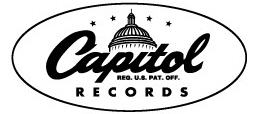 As it turned out, The Beatles had just recorded four songs that were not slated to be on the upcoming soundtrack album, which was the exact number of songs Capitol needed. Two of these, Lennon and McCartney's "Tell Me What You See" and George Harrison's "You Like Me Too Much," were deemed suitable for sending to America. Unfortunately, the other two songs, "That Means A Lot" and "If You've Got Trouble," weren't considered good enough, it being questionable at this time whether they would even be released at all. So, another idea had to be hatched for supplying Capitol with two more songs. As it turned out, The Beatles had just recorded four songs that were not slated to be on the upcoming soundtrack album, which was the exact number of songs Capitol needed. Two of these, Lennon and McCartney's "Tell Me What You See" and George Harrison's "You Like Me Too Much," were deemed suitable for sending to America. Unfortunately, the other two songs, "That Means A Lot" and "If You've Got Trouble," weren't considered good enough, it being questionable at this time whether they would even be released at all. So, another idea had to be hatched for supplying Capitol with two more songs.
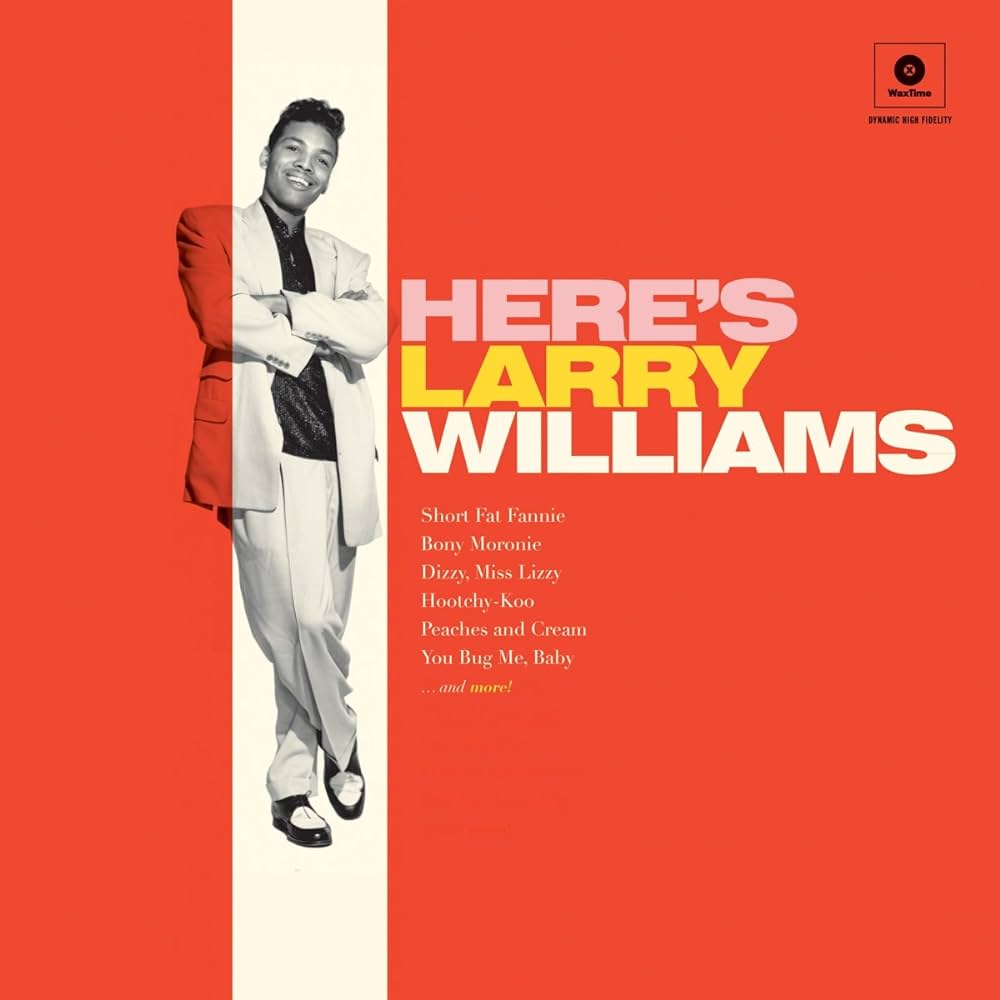 The solution was for The Beatles to enter EMI recording studios and record two new songs specifically for Capitol to include on their new album. After The Beatles completed a day's shooting for the movie "Help!" at the Cliveden House in Berkshire (shooting scenes for the inside of Buckingham Palace) on May 10th, 1965, they spent that evening in EMI Studio Two recording two songs for the American album. To play it safe, John Lennon suggested they record two cover songs they were well acquainted with from their formative touring days. Both of these were Larry Williams rockers, "Dizzy Miss Lizzy" and "Bad Boy." After the session, mono and stereo mixes of the songs were made and were duly dispatched to Capitol Records the next day by air freight. The solution was for The Beatles to enter EMI recording studios and record two new songs specifically for Capitol to include on their new album. After The Beatles completed a day's shooting for the movie "Help!" at the Cliveden House in Berkshire (shooting scenes for the inside of Buckingham Palace) on May 10th, 1965, they spent that evening in EMI Studio Two recording two songs for the American album. To play it safe, John Lennon suggested they record two cover songs they were well acquainted with from their formative touring days. Both of these were Larry Williams rockers, "Dizzy Miss Lizzy" and "Bad Boy." After the session, mono and stereo mixes of the songs were made and were duly dispatched to Capitol Records the next day by air freight.
Cover Art
 As soon as Capitol found out what the four new song titles were, they wasted no time in preparing the cover for the new album. After all, they wanted to make sure the album was in the stores well before the "Help!" soundtrack album was released. On the back cover, they included four pictures of The Beatles in EMI Studio Two from September of 1964 recording the "Beatles For Sale" album. The most noteworthy picture was one of Ringo playing the timpani during the recording session for "Every Little Thing," which just happened to be included on "Beatles VI." As soon as Capitol found out what the four new song titles were, they wasted no time in preparing the cover for the new album. After all, they wanted to make sure the album was in the stores well before the "Help!" soundtrack album was released. On the back cover, they included four pictures of The Beatles in EMI Studio Two from September of 1964 recording the "Beatles For Sale" album. The most noteworthy picture was one of Ringo playing the timpani during the recording session for "Every Little Thing," which just happened to be included on "Beatles VI."
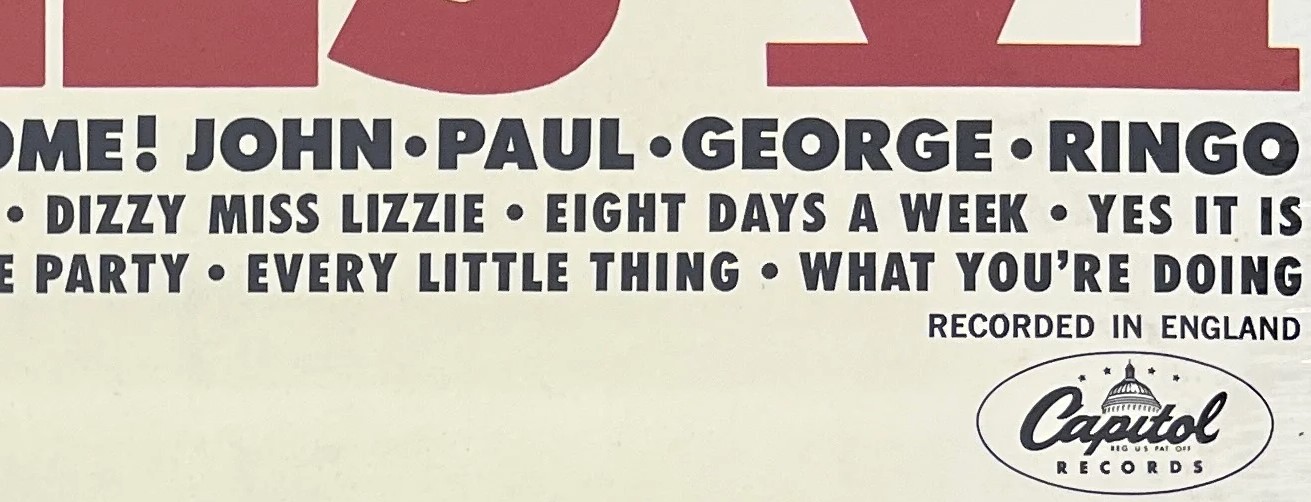 An interesting detail that many of the early purchasers may have noticed is that Capitol hadn't even decided the running order of the album when they put together the back cover. The first edition of the album shows the sentence "(See label for correct playing order)" above the list of songs. They were in such a hurry to get this together that they even misspelled "Dizzy Miss Lizzy" as "Lizzie" on the front and back covers as well as the actual record label. The second edition of the back cover showed the proper running order of the songs, but they never corrected the misspelling of "Lizzy." An interesting detail that many of the early purchasers may have noticed is that Capitol hadn't even decided the running order of the album when they put together the back cover. The first edition of the album shows the sentence "(See label for correct playing order)" above the list of songs. They were in such a hurry to get this together that they even misspelled "Dizzy Miss Lizzy" as "Lizzie" on the front and back covers as well as the actual record label. The second edition of the back cover showed the proper running order of the songs, but they never corrected the misspelling of "Lizzy."
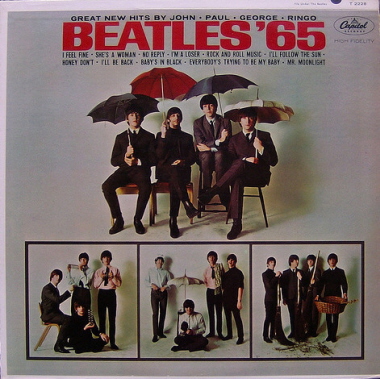 The front cover also has some interesting details. Capitol was so proud to be the first to premier four new Beatles songs to the world that they listed them first on the front cover, followed by the recent number one single "Eight Days A Week" and then the others. One large photo of The Beatles is contained on the front cover, which was taken on the same day as the pictures that graced the "Beatles '65" album (note that they are wearing the same clothes). The front cover also has some interesting details. Capitol was so proud to be the first to premier four new Beatles songs to the world that they listed them first on the front cover, followed by the recent number one single "Eight Days A Week" and then the others. One large photo of The Beatles is contained on the front cover, which was taken on the same day as the pictures that graced the "Beatles '65" album (note that they are wearing the same clothes).
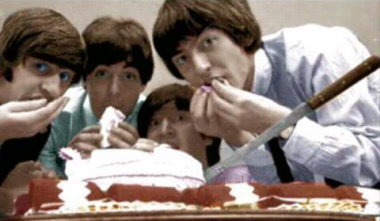 While The Beatles looked quite bored for the photo session with the umbrellas and other props as seen on the previous album (Bob Whitaker being the photographer), they all seem to be smiling and enthusiastic in the cover picture for "Beatles VI" (Bill Francis being the photographer). Maybe they liked the props for this photo shoot (credited to "Fabulous Magazine - Fleetway Publications Ltd.) better than the last one. While The Beatles looked quite bored for the photo session with the umbrellas and other props as seen on the previous album (Bob Whitaker being the photographer), they all seem to be smiling and enthusiastic in the cover picture for "Beatles VI" (Bill Francis being the photographer). Maybe they liked the props for this photo shoot (credited to "Fabulous Magazine - Fleetway Publications Ltd.) better than the last one.
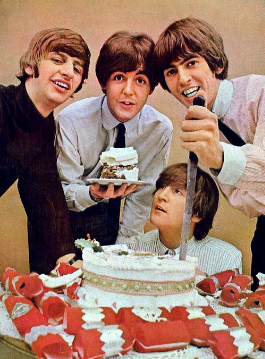 However, the only question is: What is the prop in this picture? Many fans have wondered what the heck the four Beatles all have their hands on in this photo. This question can be answered by viewing the other pictures taken during this photo shoot, as well as this full picture before it was cropped for the album cover. It shows all four Beatles grasping a long knife, cutting a cake. To prove that this wasn't the product of "Photoshop," there are other pictures showing them with the cut cake as well as eating it. Mystery solved! However, the only question is: What is the prop in this picture? Many fans have wondered what the heck the four Beatles all have their hands on in this photo. This question can be answered by viewing the other pictures taken during this photo shoot, as well as this full picture before it was cropped for the album cover. It shows all four Beatles grasping a long knife, cutting a cake. To prove that this wasn't the product of "Photoshop," there are other pictures showing them with the cut cake as well as eating it. Mystery solved!
Recording The Album
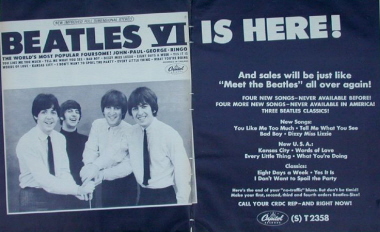 Since "Beatles VI" was a composite album that was created expressly for the US market, as Capitol's merchandizing vice president Brown Meggs explained in the June 5th, 1965 issue of Billboard, the recording sessions were spread over nine and a half months. September 29th, 1964 was the first session for the album, resulting in the song "I Don't Want To Spoil The Party" being fully recorded, and the last session was on May 10th, 1965 when both "Dizzy Miss Lizzy" and "Bad Boy" were recorded. Only nine sessions were held during this entire time span resulting in the complete "Beatles VI" album. Since "Beatles VI" was a composite album that was created expressly for the US market, as Capitol's merchandizing vice president Brown Meggs explained in the June 5th, 1965 issue of Billboard, the recording sessions were spread over nine and a half months. September 29th, 1964 was the first session for the album, resulting in the song "I Don't Want To Spoil The Party" being fully recorded, and the last session was on May 10th, 1965 when both "Dizzy Miss Lizzy" and "Bad Boy" were recorded. Only nine sessions were held during this entire time span resulting in the complete "Beatles VI" album.
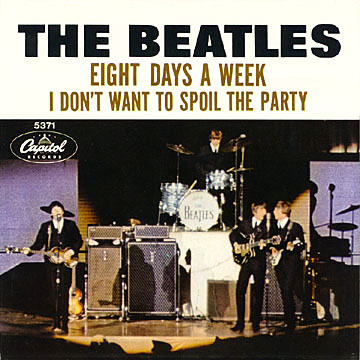 While this album contained some definite high spots, the recent US #1 single "Eight Days A Week" being a prime example, it is generally viewed in retrospect as one of their weaker American albums. The majority of the impressive cuts from their British "Beatles For Sale" album had already been placed on the previous "Beatles '65" album, so what was leftover needed some spunk to spruce things up. Unfortunately, the more recent tracks offered from EMI were ones that didn't quite make the cut for being in the upcoming soundtrack album, so they weren't the best they had to offer at the time. While this album contained some definite high spots, the recent US #1 single "Eight Days A Week" being a prime example, it is generally viewed in retrospect as one of their weaker American albums. The majority of the impressive cuts from their British "Beatles For Sale" album had already been placed on the previous "Beatles '65" album, so what was leftover needed some spunk to spruce things up. Unfortunately, the more recent tracks offered from EMI were ones that didn't quite make the cut for being in the upcoming soundtrack album, so they weren't the best they had to offer at the time.
 Producer George Martin agrees with this conclusion. Regarding the "Beatles For Sale" sessions, he explained that the band was "rather war weary...One must remember that they'd been battered like mad throughout 1964, and much of 1963. Success is a wonderful thing but it is very, very tiring. They were always on the go. (The album) doesn't appeal to me very much now; it's not one of their most memorable ones. They perked up again after that." Producer George Martin agrees with this conclusion. Regarding the "Beatles For Sale" sessions, he explained that the band was "rather war weary...One must remember that they'd been battered like mad throughout 1964, and much of 1963. Success is a wonderful thing but it is very, very tiring. They were always on the go. (The album) doesn't appeal to me very much now; it's not one of their most memorable ones. They perked up again after that."
 Nonetheless, America accepted the album with wide-open arms. After its release on June 14th, 1965, it took only three weeks to hit the #1 spot on the Billboard album chart (from #149 to #48 to #1). It stayed in the top spot for six straight weeks and spent a further seven weeks in the Top Ten. The last four weeks of its stay in the Top Ten were the first four weeks that their follow-up album, "Help!", was at #1. Needless to say, America got a good dose of Beatlemania in the summer of 1965. Nonetheless, America accepted the album with wide-open arms. After its release on June 14th, 1965, it took only three weeks to hit the #1 spot on the Billboard album chart (from #149 to #48 to #1). It stayed in the top spot for six straight weeks and spent a further seven weeks in the Top Ten. The last four weeks of its stay in the Top Ten were the first four weeks that their follow-up album, "Help!", was at #1. Needless to say, America got a good dose of Beatlemania in the summer of 1965.
Written and compiled by Dave Rybaczewski
CLICK ON THE SONG TITLES BELOW TO READ THE IN-DEPTH HISTORY OF THE SONGS ON "BEATLES VI"
|
IF YOU WOULD LIKE TO MAKE A DONATION TO KEEP THIS WEBSITE UP AND RUNNING, PLEASE CLICK BELOW!
|